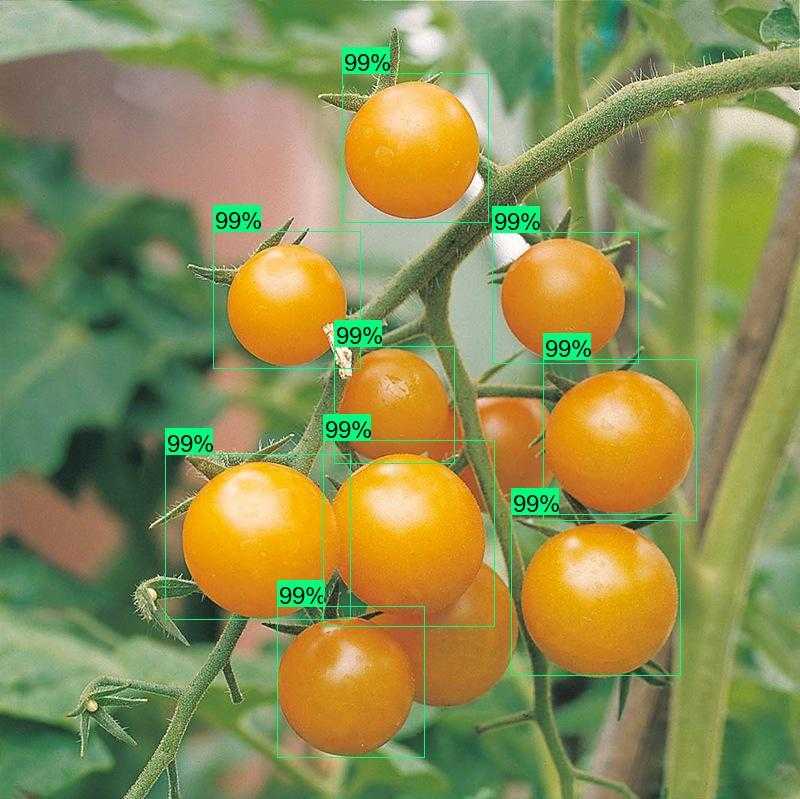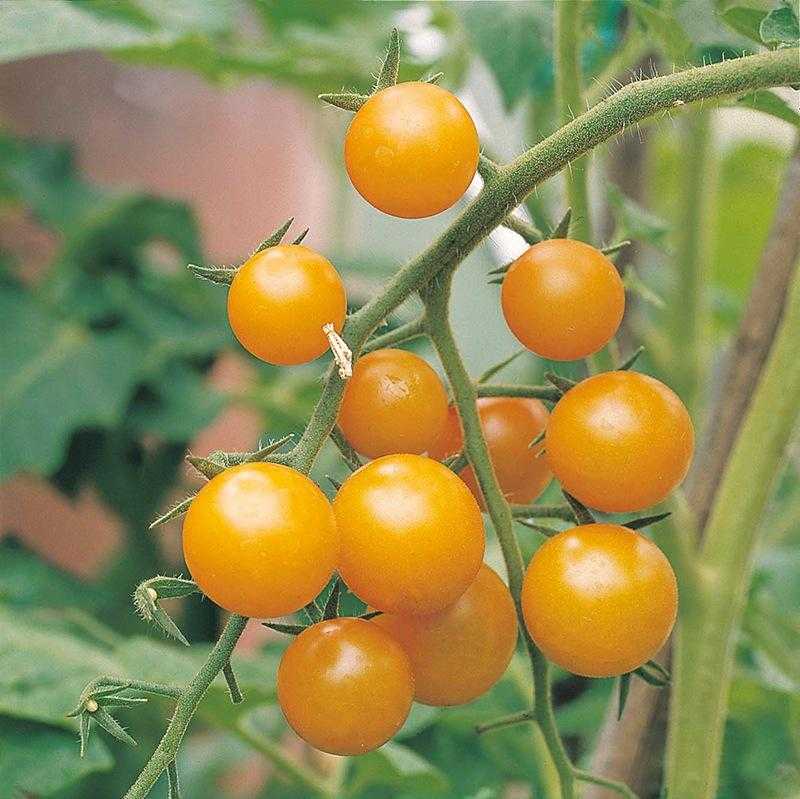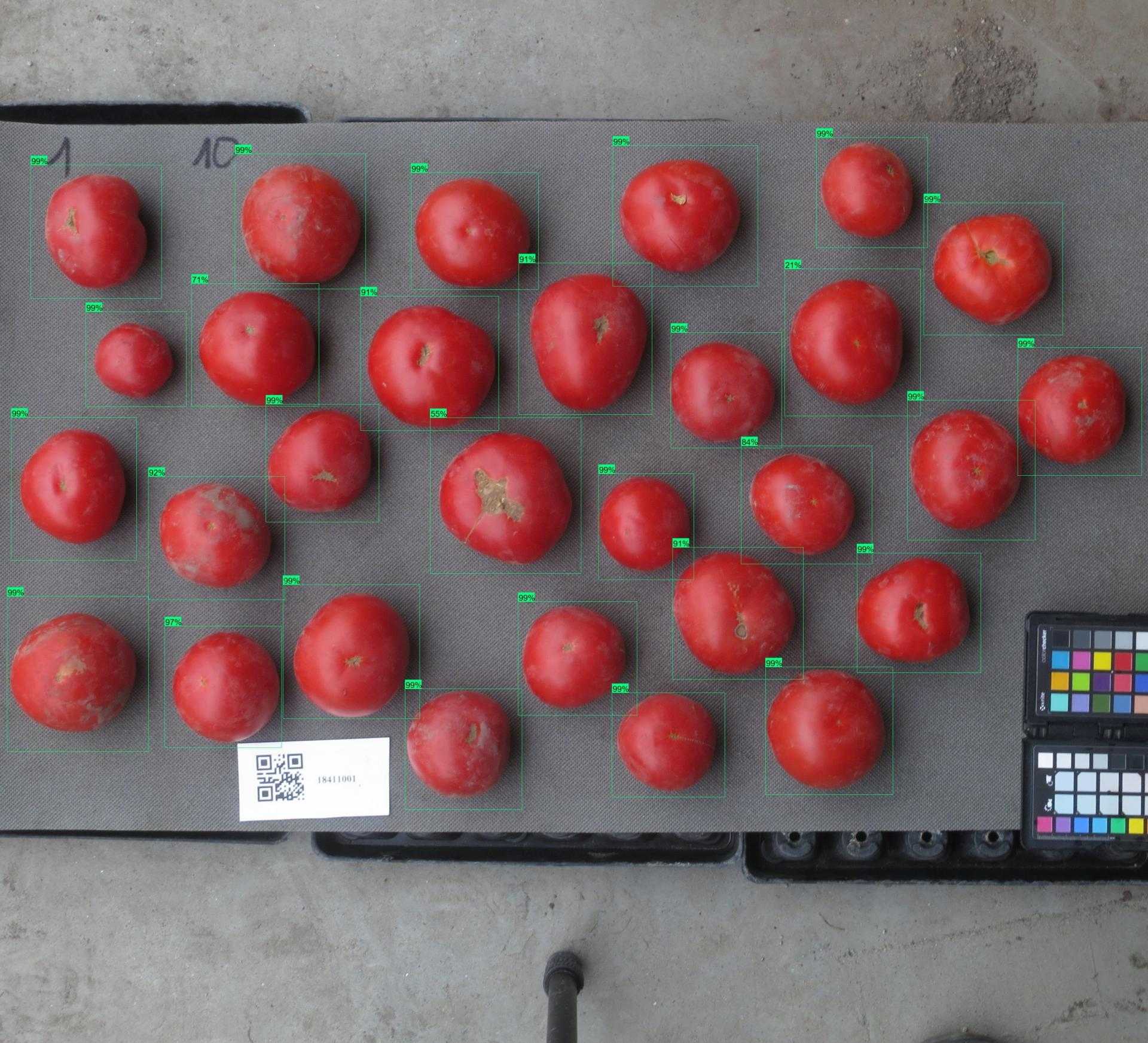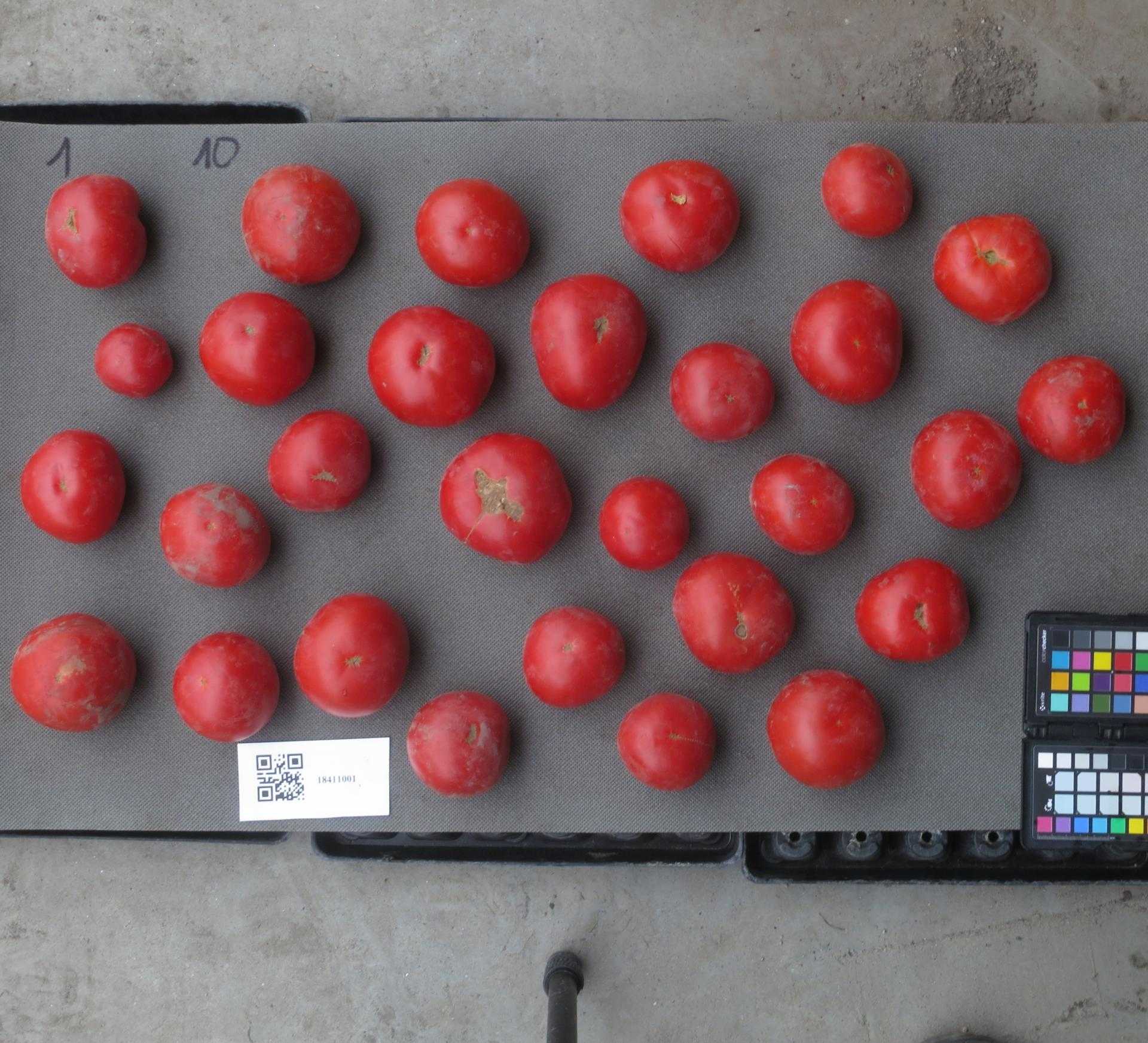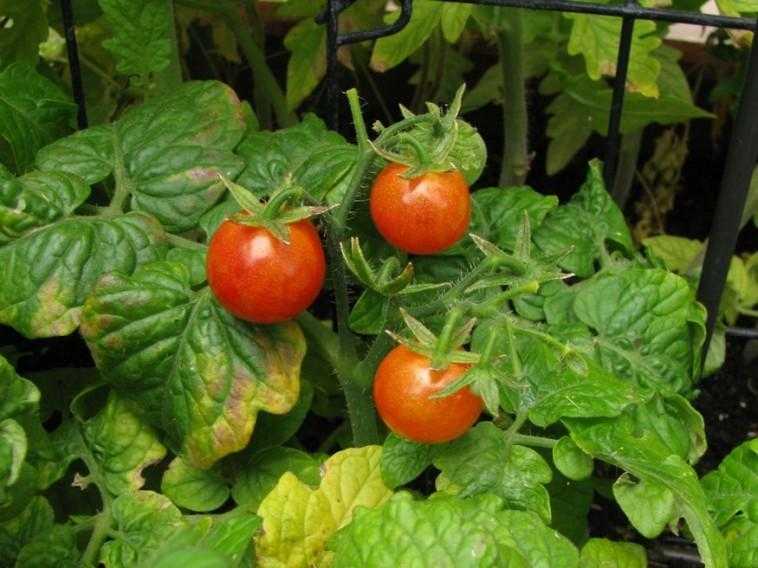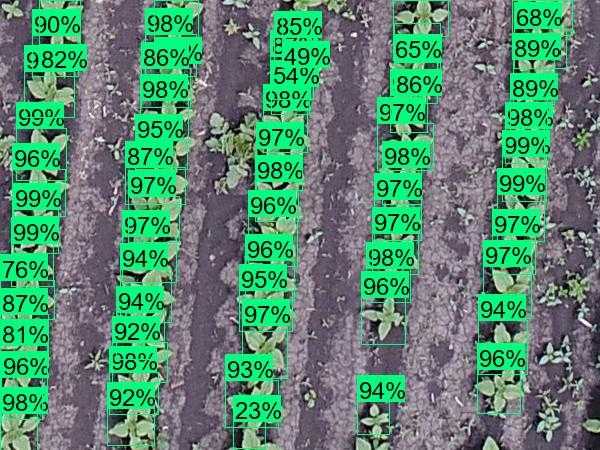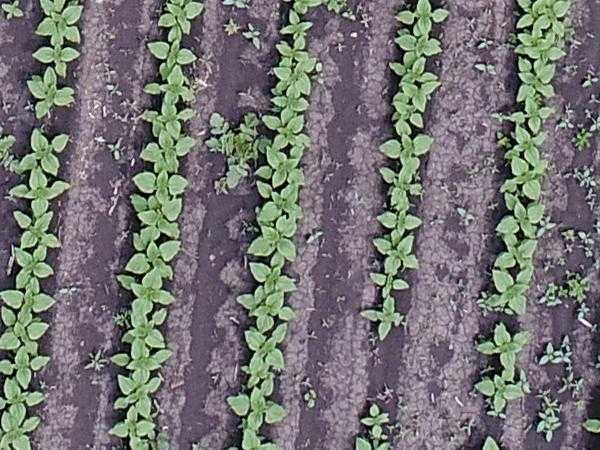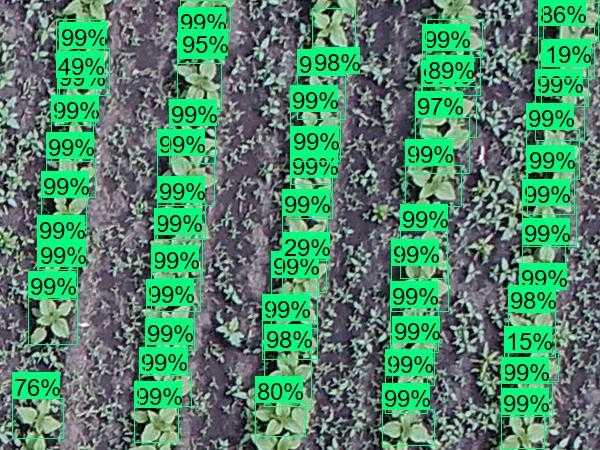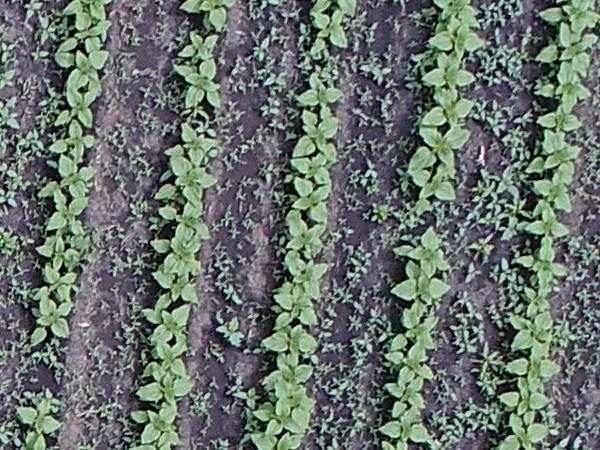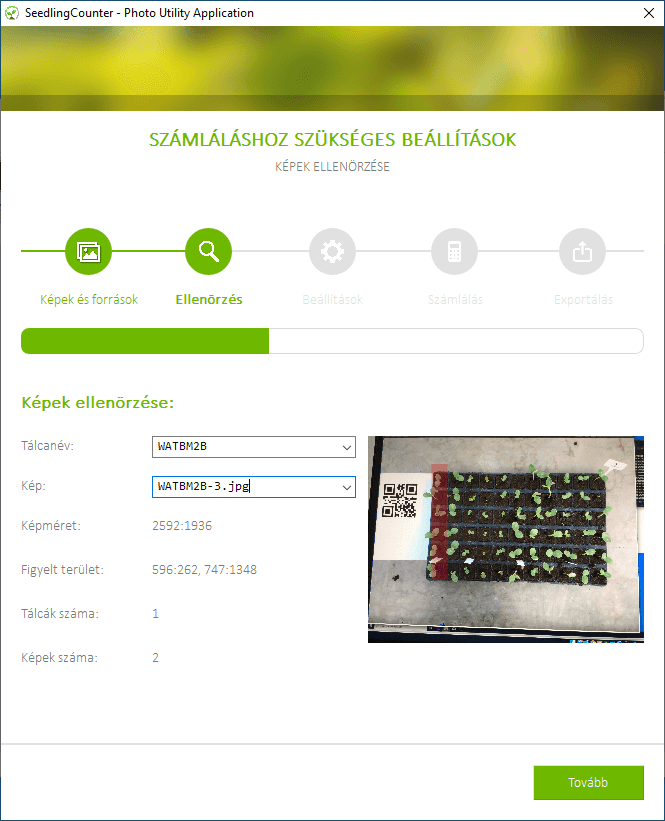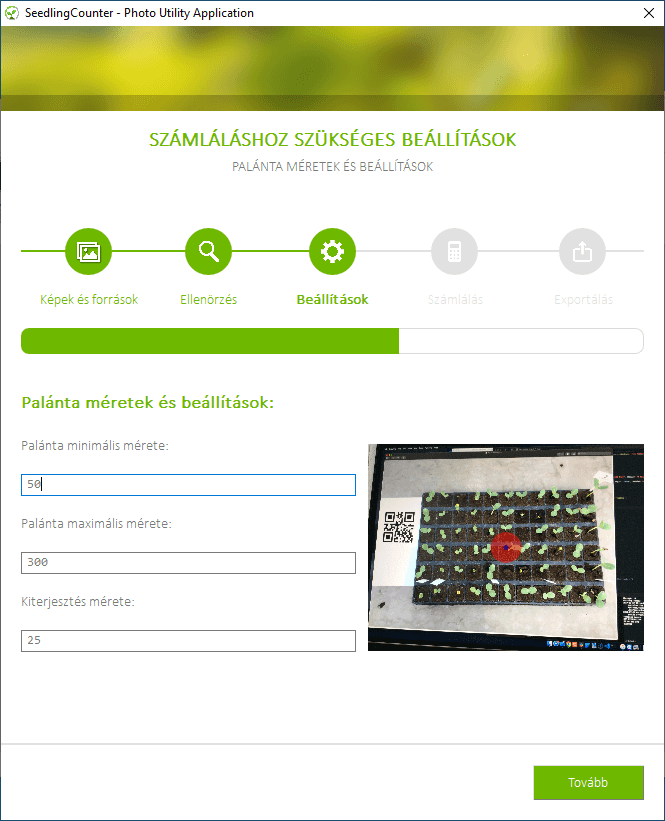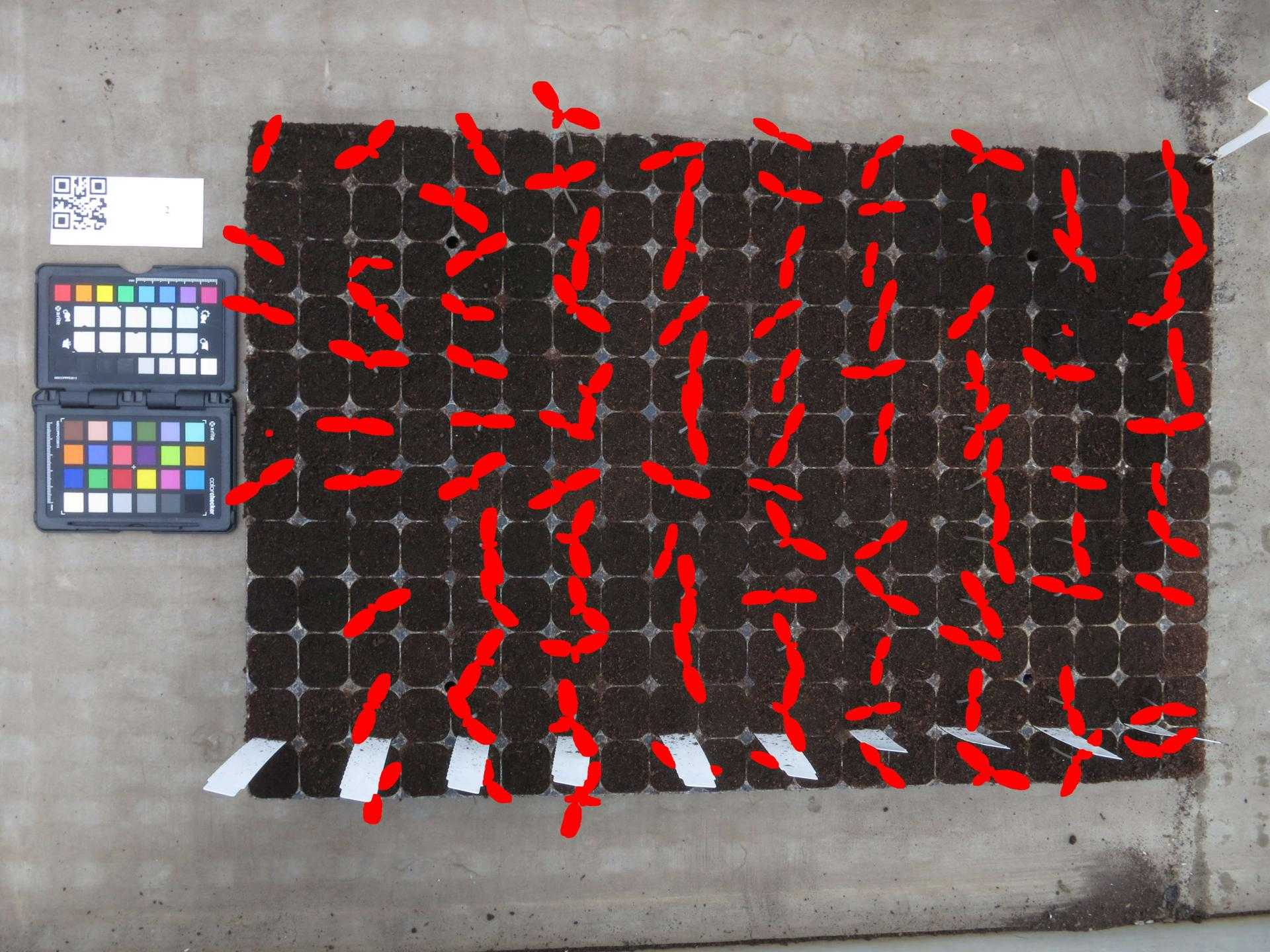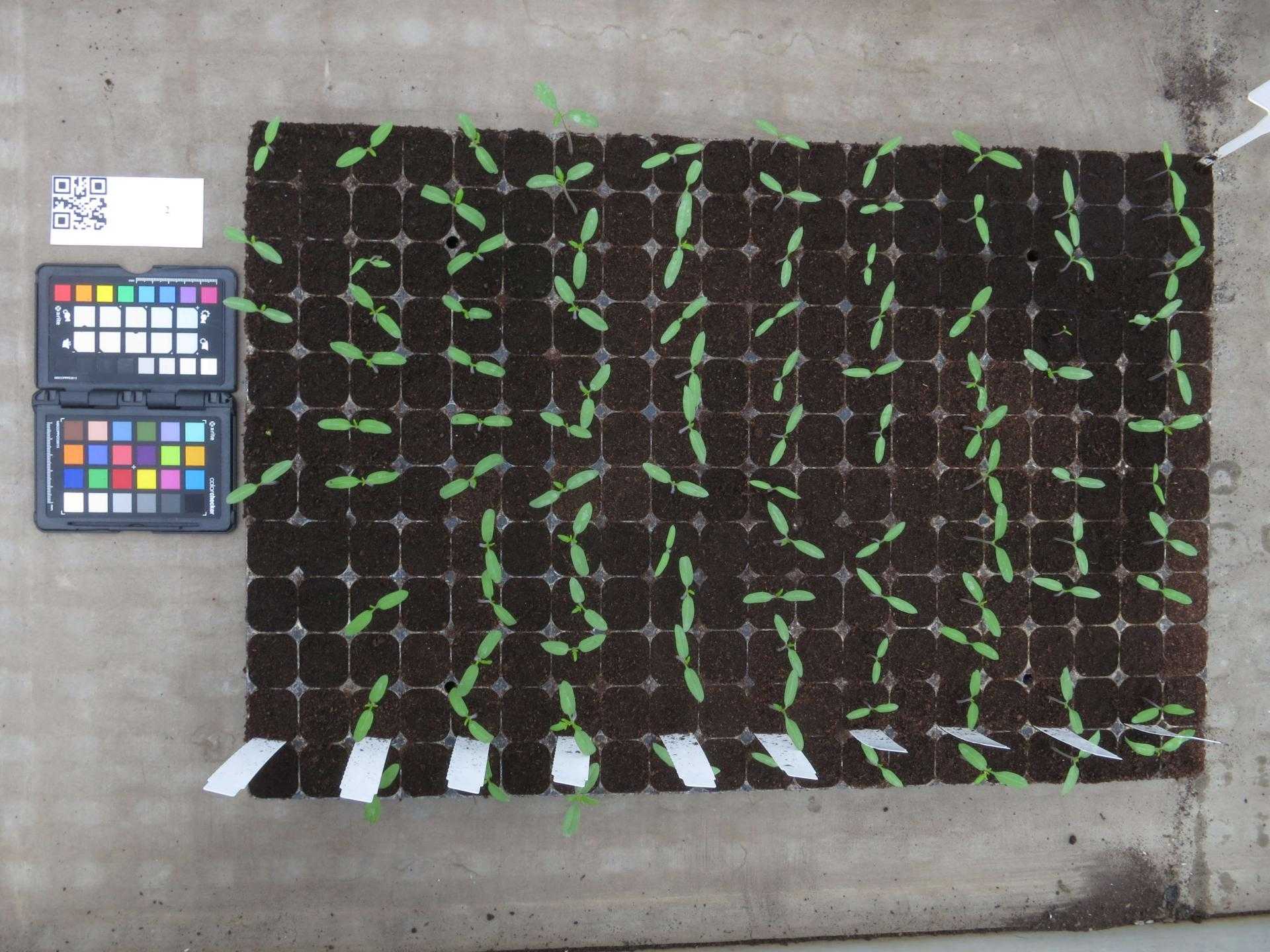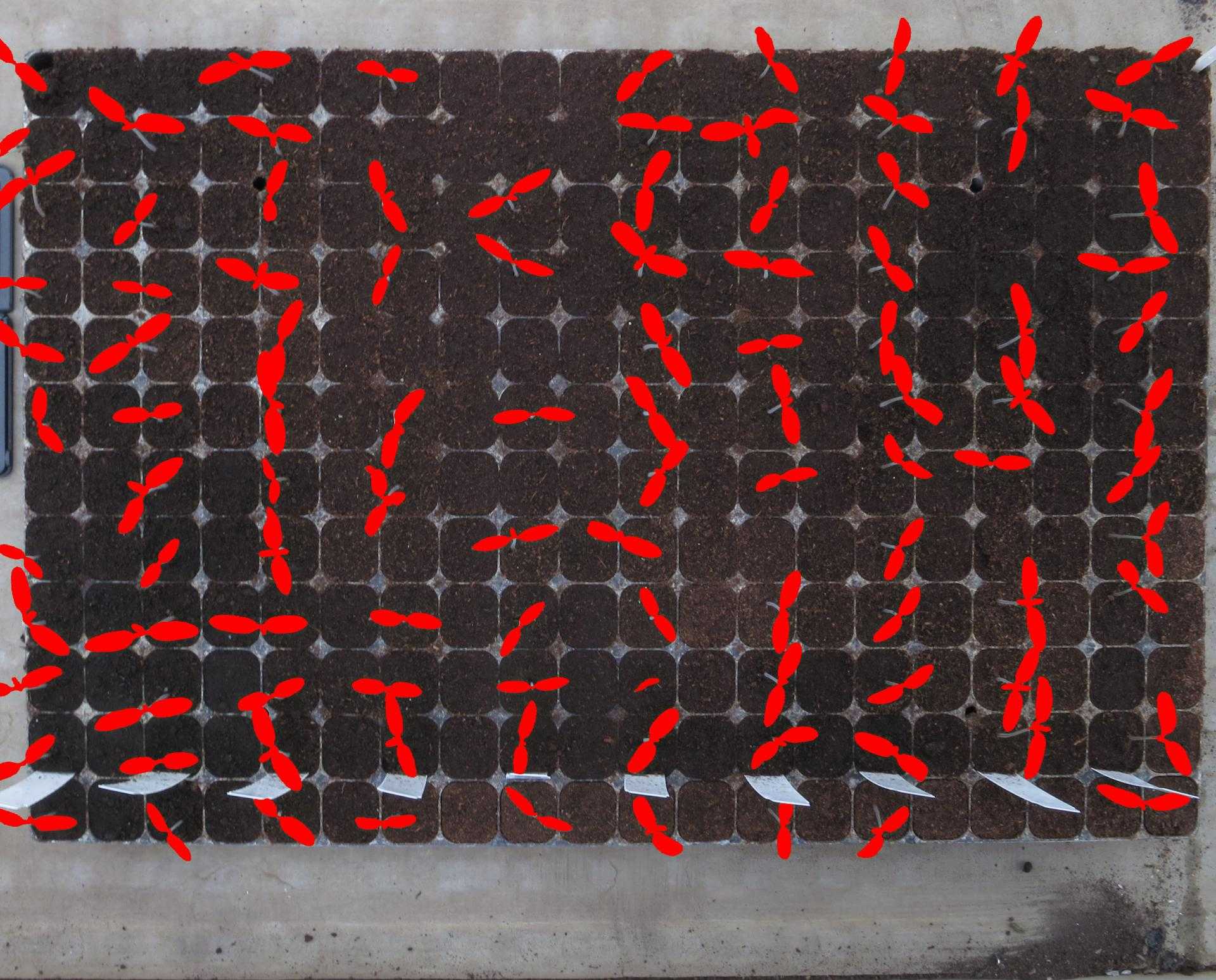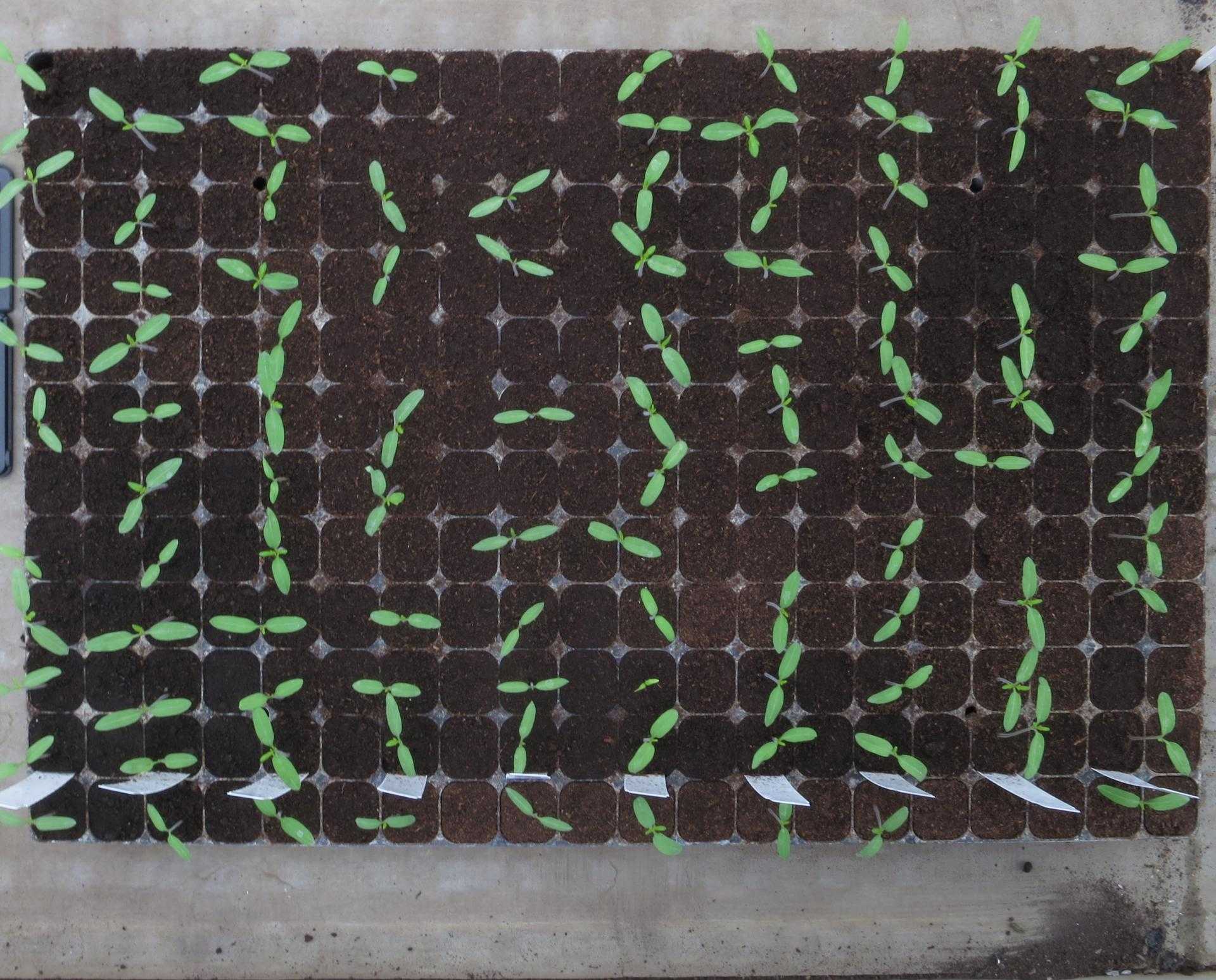Machine Learning in Crop Production
With the help of artificial intelligence and machine learning, we can automate the counting of plants and fruits.
Thanks to object detection technology, seedlings or fruits can be counted if a sufficient number of samples is present, even if they are not fully visible (if they are partially covered by other seedlings, fruits or other plants).
The technology also allows the fruit to be sorted by size, weight and color.
Counting Plants with Object Detection
- Base model: faster_rcnn_inception_v2 (coco)
- Input: 255×255
- Output: position and recognition percentage of the detected object
Object detection technology was used to detect and count tomatoes, corn and sunflowers. We re-taught the faster_rcnn_inception_v2_coco basic model with our own dataset, so we got a fairly accurate model that can recognize plants even if they are not fully visible.
The object detection model was re-trained with approx. 1500 tomato images. The test data achieved 97% accuracy after 18,672 epochs (teaching repetition count).
This model is able to recognize tomatoes on seedlings, regardless of color or size.
Sunflower Counting on Large Drone Images
- Base model: faster_rcnn_inception_v2 (coco)
- Input: 600×450
- Output: position and recognition percentage of the detected object
The drone footage was taken at a height of 20 meters, at a resolution of 4864x3648 pixels. These images would have been too large for training, so we cut them into 600x450 images and used these to train the model. Approx. 2500 images were used for training. The test data achieved 90% accuracy after 9427 epochs (teaching repetition count). This model is able to detect both small and large size sunflowers.
Counting Seedlings Using the Plantcv Framework and Machine Vision
SeedlingCounter is an easy-to-use image capture and seed counting preparation program for iOS. The trays are identified by a QR code and then captured. The application associates the captured images with regions of interest and forwards them to the application running on the server. After a quick setup, it arranges the received images into columns, count them and export them in Excel format.
The counting process
The images and their associated ROI files are scanned from a specified folder. The images are processed to black-and-white for easier recognition of shapes. When counting dicotyledonous plants, we increase the contour drawn around the shapes so that the leaves abut. If the leaves do not abut and form two or more shapes, the program will count incorrectly. The plant shapes are recognized and counted by the program. It will color recognized shapes and save them as images for later verification.
